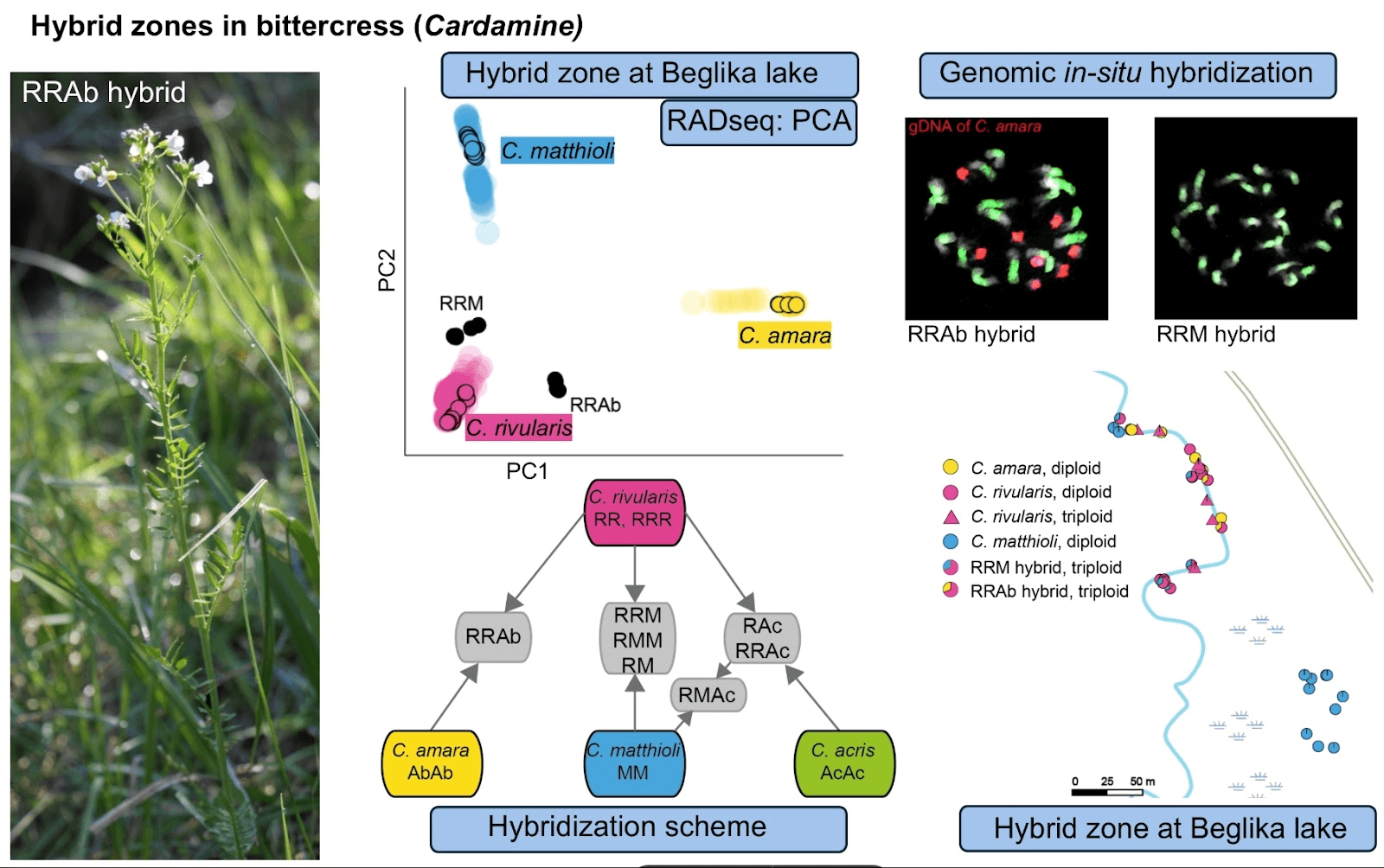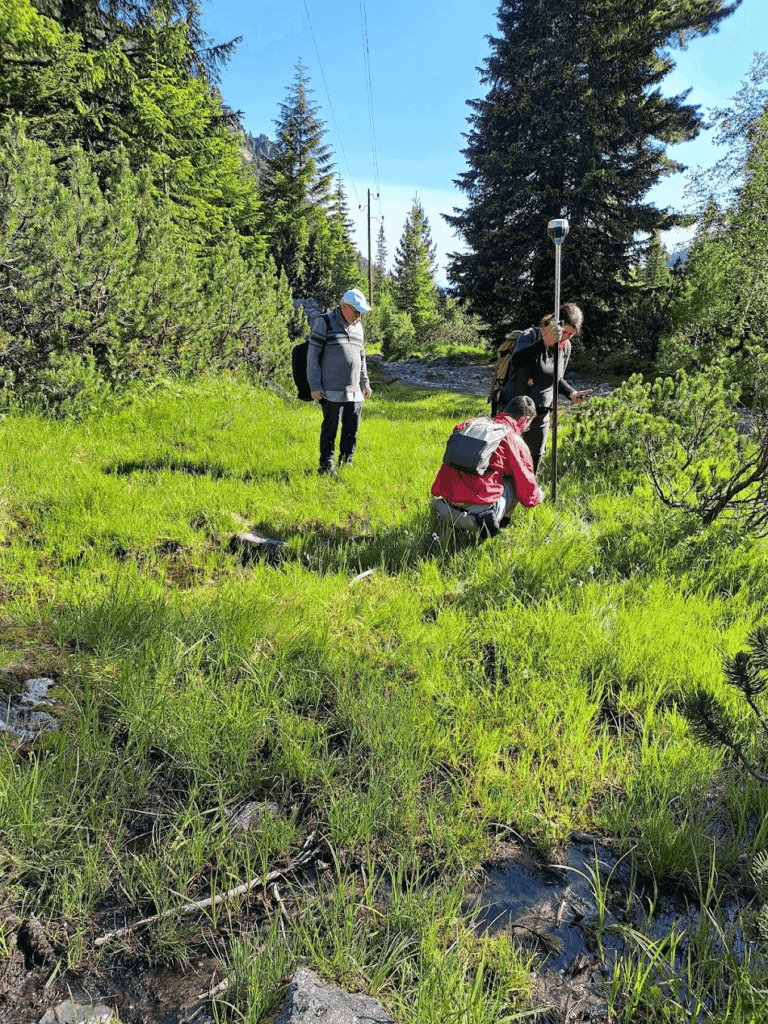
Hybrid zones are areas where related species come into contact and interbreed. Hybridisation is often associated with natural or anthropogenic disturbances of the environment, as such conditions promote secondary contact between originally isolated species. For biologists, these zones provide an exceptional opportunity to observe processes directly linked to the origin of new species, including interspecific gene flow (hybridisation and introgression), loss of genetic identity in parental populations, polyploidisation (the formation of organisms with more than two chromosome sets), and ultimately speciation itself.
The genus Cardamine is well known for the central role of polyploidisation in its diversification. Moreover, it includes one of the few well-documented cases of allopolyploid species formation that has occurred within the last three centuries.
One recently recorded case of interspecific hybridisation is the triploid hybrid Cardamine × rhodopea, discovered in the Bulgarian mountains. Our pilot survey suggested more complex patterns of interspecific gene exchange than previously assumed, as several Cardamine species occur in sympatry or close spatial proximity in this region, thereby increasing the potential for interspecific gene flow.
In our study, we combined cytogenetic and genomic approaches and uncovered an exceptionally extensive hybridisation event involving up to four parental species. Their progeny are predominantly triploid (possessing three chromosome sets). We demonstrated that these triploids arise recurrently and independently at multiple sites. Some represent autotriploids (originating within a single species), whereas others are allotriploids (integrating genomes of different species).
A key species in this system is Cardamine rivularis, which frequently produces unreduced female gametes (ovules with a doubled chromosome number). When fertilised by diploid species, these gametes give rise to a wide spectrum of triploids. However, this species simultaneously faces the risk of ecological displacement by successful hybrids, as well as genetic “swamping”, whereby gene flow leads to the replacement of its unique genetic constitution by hybrid genotypes, ultimately resulting in the extinction of the pure parental form.
The hybrids we examined exhibit high genetic variability, occur in large numbers, show partial fertility, and additionally spread efficiently through clonal propagation. This confers considerable evolutionary potential, enabling them to persist over the long term and, in some cases, to serve as the foundation for the emergence of new polyploid species.
These hybrid zones therefore represent unique natural laboratories in which we can observe, in real time, the formation of new evolutionary lineages and the mechanisms underlying polyploid evolution.
Link to the study: https://nph.onlinelibrary.wiley.com/doi/full/10.1111/nph.70575
Text: B. Šingliarová
Photo: B. Šingliarová & J. Zozomová-Lihová

Funded by the EU NextGenerationEU through the Recovery and Resilience Plan for Slovakia under project no. 09I03-03-V04-00489 (to JZ-L).







